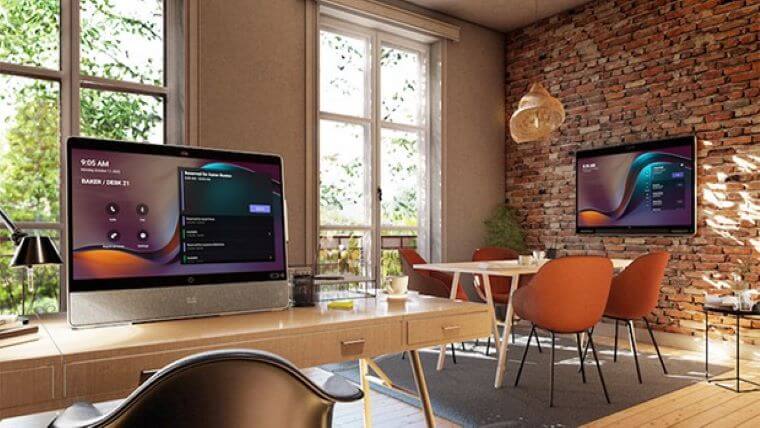The News: During Microsoft’s Ignite 2022 conference, the Webex Devices team announced native support for Microsoft Teams Rooms to provide the enterprise with true interoperability for Webex Room Kits and devices. This announcement impacts Webex devices operating on RoomOS 11, enabling native dual platform support through a seamless transition between scheduled Webex and Microsoft Teams meetings. Read the release from Cisco here.
Cisco Announces Native Microsoft Teams Support for Webex Devices to Deliver a New Level of Meeting Flexibility
Analyst Take: In a world where at least half the enterprise leverages multiple meeting platforms, being tied to a single ecosystem can be limiting for hardware vendors. As the world continues to transition offices to post-pandemic hybrid-enabled workplaces, the need for flexibility within the meeting space has never been greater. While laptops, tablets and phones can change between Microsoft Teams, Cisco Webex, Zoom, Google Meet, and others on a moment’s notice, room devices tend to be tethered to a single meeting service with a guest-join option when participating with another service’s meeting. The resulting experience challenges adopting organizations as meeting spaces lack the same level of flexibility between meeting platforms as personal devices. The challenge of interoperability is driving hardware vendors to rethink the meeting room experience towards a more agnostic approach, much like the Webex devices team has just announced.
By reorienting the devices portfolio to support both native Webex RoomOS 11 and Microsoft Teams Rooms for Android simultaneously, groups can now seamlessly schedule, initiate, and collaborate in the meeting service of choice. To achieve this interoperability, Webex devices recognize which platform is tied to a meeting invite and initiates the service’s native experience when prompted. The out-of-meeting experience retains the Webex user interface, switching to the Microsoft Teams Room experience as a Microsoft Teams meeting is initiated.
Outside of the user experience, there are key benefits to this approach for Webex. With Webex devices having some of the best build quality in the industry in addition to great performance, it stands to reason that Microsoft Teams environments would be interested in building meeting rooms with Webex Board Pro, Desk or Desk Pro, Desk Mini, and Webex Room Kits. With more than half the enterprise self-reporting use and support for at least two meeting platforms internally, a seamless device experience is key for collaboration and productivity. As evidence of need-recognition we’ve seen recent announcements from other hardware vendors attempting to support multiple platforms, with Zoom partners Neat and DTEN announcing support for native Microsoft Teams Rooms experiences this year as well.
Changes to the procurement process and daily use are driving innovation across hardware vendors, and with this announcement Cisco Webex becomes one of the easiest ecosystems for interoperability. The likely result is increased market share for Webex collaboration devices as they proliferate beyond the current customer base, acting as a new beachhead for Cisco. Gone are the days where the meeting experience dictated the hardware vendor, we’re now living in a time where devices, digital whiteboards, recording features, and other value propositions serve the need regardless of meeting platform.
Disclosure: This is a guest contribution from Wainhouse Research, part of The Futurum Group family of companies. Futurum Research is a research and advisory firm that engages or has engaged in research, analysis, and advisory services with many technology companies, including those mentioned in this article. The author does not hold any equity positions with any company mentioned in this article.
Analysis and opinions expressed herein are specific to the analyst individually and data and other information that might have been provided for validation, not those of Futurum Research and/or Wainhouse Research as a whole.
Other insights from Futurum Research:
Cisco Q4 2022 and FY 2022: Delivering Business Momentum and Beating Expectations
Microsoft Ignite 2022: New Interactive Collaboration Features Introduced for Microsoft
Image Credit: AV Magazine
Author Information
Daniel Root is a Senior Analyst with Wainhouse – A Futurum Group company. His area of expertise is digital workplace and workforce communications technologies and services.






